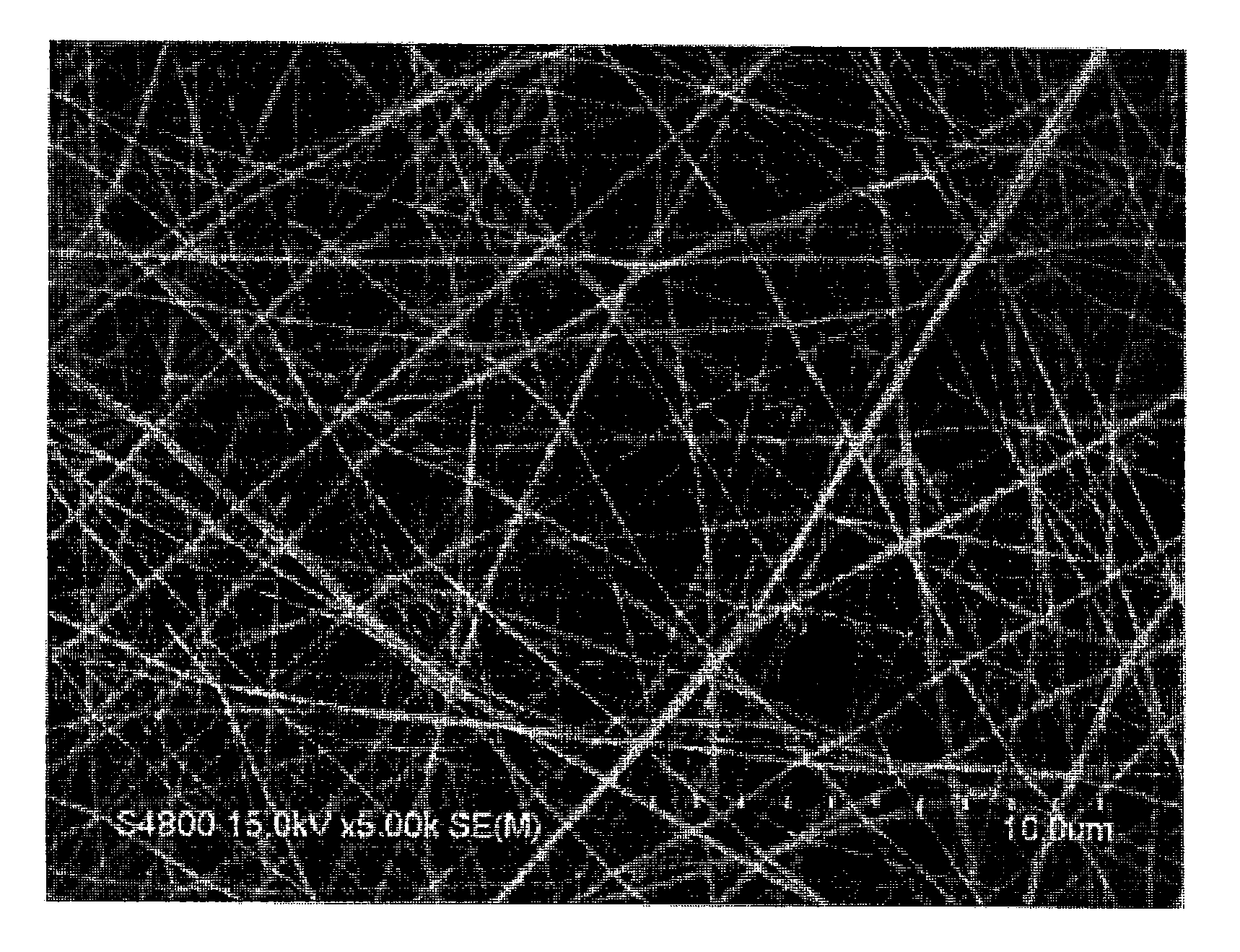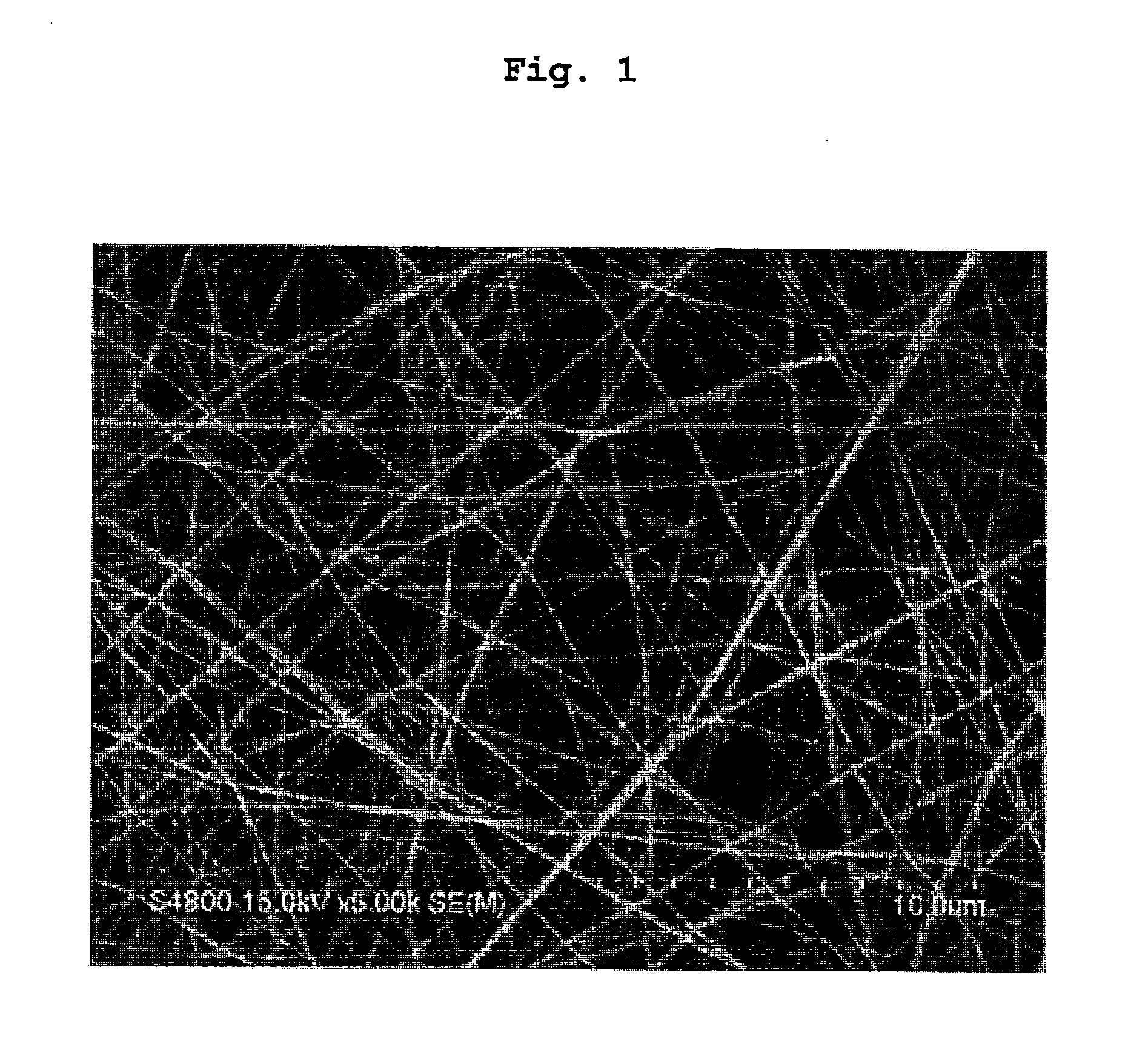Medical material and method for manufacturing same
- Summary
- Abstract
- Description
- Claims
- Application Information
AI Technical Summary
Benefits of technology
Problems solved by technology
Method used
Image
Examples
production example 1
Poly-L-Alanine Fiber Structure
[0165]N-carboxy-L-alanine anhydride (1.4 wt %) was added to benzene and the mixture was stirred for 2-3 days to give poly-L-alanine. This was dissolved in a dichloromethane-trifluoroacetic acid mixed solvent (50:50 (v / v)) to give a 4 wt % poly-L-alanine solution. This solution was placed in a syringe (TERUMO CORPORATION) equipped with a nozzle (needle, diameter 940 μm) where the distance between the nozzle and the collector was set to 10-15 cm, and the solution was discharged while applying a 20-38 kV voltage to form a fiber structure made of poly-L-alanine on a collector. A scanning electron microscope (SEM) photograph of the surface of the obtained fiber structure made of poly-L-alanine is shown in FIG. 1.
production example 2
Poly-L-Leucine Fiber Structure
[0166]N-carboxy-L-leucine anhydride (11.1 wt %) was added to 1,2-dichloroethane, and N,N-dimethyl-1,3-propanediamine was added as an initiator. The mixture was stirred for 2-3 days to give poly-L-leucine. This was dissolved in a dichloromethane-trifluoroacetic acid mixed solvent (30:70 (v / v)) to give a 4 wt % poly-L-leucine solution. A fiber structure made of poly-L-leucine was obtained from this solution in the same manner as in Production Example 1.
production examples 3-7
Various Polyamino Acid Fiber Structures
[0167]In the same manner as in Production Example 1 or 2, various N-carboxy-L-amino acid anhydrides were added to a polymerization solvent, a polymerization initiator was added as necessary, and the mixture was stirred for 2-3 days to give various polyamino acids. The polymerization solvents and polymerization initiators used are as shown in Table 1. Solutions of various polyamino acids were prepared using the solvents shown in Table 1, and fiber structures made of various polyamino acids were obtained from these solutions in the same manner as in Production Example 1.
PUM
| Property | Measurement | Unit |
|---|---|---|
| Length | aaaaa | aaaaa |
| Diameter | aaaaa | aaaaa |
| Diameter | aaaaa | aaaaa |
Abstract
Description
Claims
Application Information
 Login to View More
Login to View More - R&D
- Intellectual Property
- Life Sciences
- Materials
- Tech Scout
- Unparalleled Data Quality
- Higher Quality Content
- 60% Fewer Hallucinations
Browse by: Latest US Patents, China's latest patents, Technical Efficacy Thesaurus, Application Domain, Technology Topic, Popular Technical Reports.
© 2025 PatSnap. All rights reserved.Legal|Privacy policy|Modern Slavery Act Transparency Statement|Sitemap|About US| Contact US: help@patsnap.com


